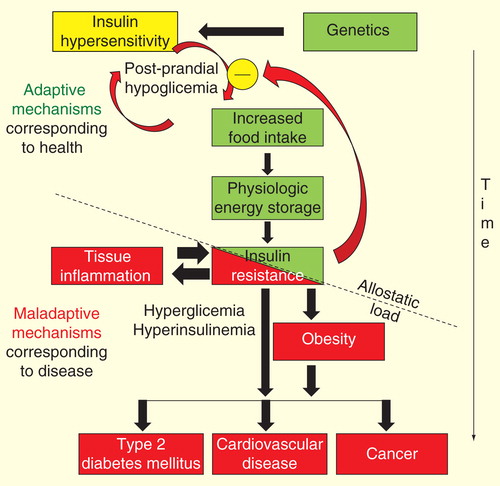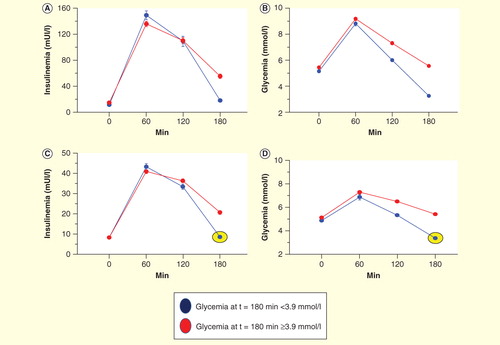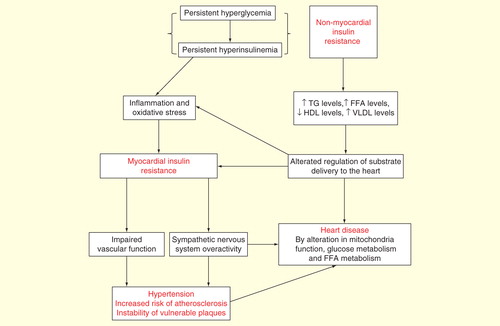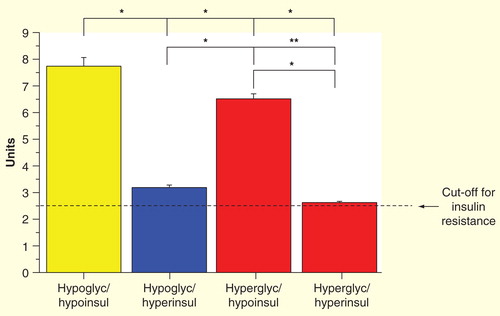Figures & data
Figure 2. Representation of the hypothetic chain of events that lead from insulin hypersensitivity to insulin resistance-associated diseases. On the basis of genetic predisposition, the early events are initially displayed by insulin hypersensitivity and postprandial hypoglycemia. Postprandial hypoglycemia leads to increased caloric consumption and, therefore, to body weight increase. A new steady state of insulin sensitivity is reached to maintain stable body weight. With iterative exposure to the deleterious stimulus (frequency factor) and/or the duration of exposure is extended (time-exposure factor), an allostatic load is reached and insulin resistance is transformed from an adaptive to a maladaptive mechanism.

Figure 3. Graphical results of 941 oral glucose test tolerance (OGTT) studies, according to glucose and insulin response to oral glucose load. Insulin-resistant OGTTs: (A) Insulin curves of normal and insulin-resistant subjects. Blue line indicates insulinemic response of subjects with hypoglycemia (<3.9 mmol/l). (B) Glucose curves of subjects with high insulin responses during OGTT. Red lines indicate normal glucose responses. Insulin-sensitive OGTTs. (C) Insulin curves of subjects with normal and insulin hypersensitivity. Blue lines and circles indicate insulinemic responses of patients with hypoglycemia and low plasma insulin levels (<70 mU/ml at 1 h after glucose load). (D) Glucose curves of subjects with low insulin responses during OGTT. Red lines indicate normal glucose responses.



